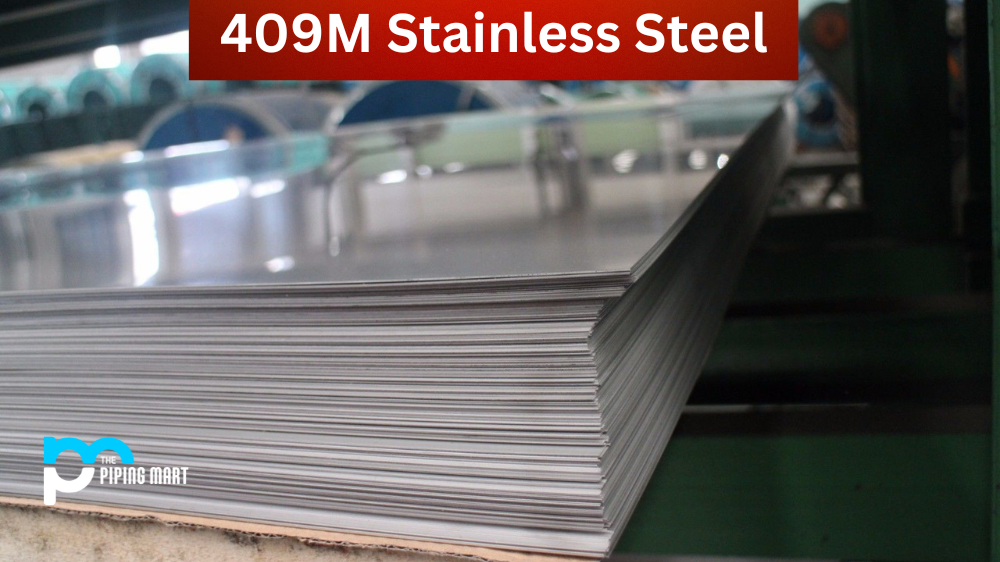UNS T11333 is an extremely durable and reliable high-grade alloy that is known for its strength, corrosion resistance, heat resistance, and machining capabilities. Tool Steel M33 has a variety of uses in the manufacturing industry and is popular among metalworkers due to its durability and versatility. This article will discuss the composition, chemical properties, mechanical properties, physical properties, uses corrosion resistance, heat resistance, heat treatment, and welding of tool steel M33.
M33 Tool Steel Composition
The major alloying element in tool steel M33 is molybdenum – it makes up 6.50 – 7.75% of the total composition. Other elements include carbon (0.60-0.90%), chromium (5.00-5.50%), manganese (1.00 max%), silicon (0.30 max%) and tungsten (3.00-3.50%).
| Element | Content (%) |
|---|---|
| Fe | Balance |
| C | 0.85-0.92 |
| Mn | 0.15-0.40 |
| Si | 0.15-0.50 |
| Cr | 3.50-4.00 |
| Ni | 0.3 |
| Mo | 9.00-10.00 |
| W | 1.30-2.10 |
| V | 1.00-1.35 |
| Co | 7.75-8.75 |
| Cu | 0.25 |
| P | 0.03 |
| S | 0.03 |
M33 Tool Steel Chemical Properties
UNS T11333 has excellent wear resistance due to its high hardness level combined with its ability to resist deformation at elevated temperatures. It also has good toughness as well as a high level of impact strength which makes it ideal for use in demanding applications such as die casting or forging dies where shock loading may occur during operation or when exposed to extreme pressures or temperatures during service conditions.
M33 Tool Steel Mechanical Properties
M33 tool steel has excellent mechanical properties, including tensile strength of 870 MPa – 1040 MPa; yield strength of 515 MPa – 690 MPa; elongation at break 15%; reduction in area 55%. It also has excellent fatigue life when used at elevated temperatures and loads which makes it suitable for applications such as cutting tools for machining operations or tools used for forming operations such as extrusion dies or impact tools like hammers and punches.
| Mechanical properties | Metric | Imperial |
|---|---|---|
| Poisson’s ratio | 0.27-0.30 | 0.27-0.30 |
| Elastic modulus | 190-210 GPa | 27557-30458 ksi |
M33 Tool Steel Physical Properties
The physical properties of M33 steel are quite impressive as well; it has a density of 7800kg/m3; melting point range 1375°C – 1425°C; thermal conductivity 11 W/mK; electrical resistivity 0.09µohm cm; modulus of elasticity 205 GPa; Poisson’s ratio 0.27 – 0.30; specific heat capacity 500 J/kg K.
| Physical properties | Metric | Imperial |
|---|---|---|
| Melting point | 1427°C | 2601°F |
M33 Tool Steel Thermal Properties
| Properties | Conditions | ||
|---|---|---|---|
| T (°C) | Treatment | ||
| Thermal expansion | 11 x 10-6/ºC | 20-425 | – |
M33 Tool Steel Equivalent
- DIN 1.3249
- B.S. BM 34
- ASTM A600
- FED QQ-T-590
- UNS T11333
M33 Tool Steel Uses
UNS T11333 can be used in a variety of applications including cutting tools for machining operations such as drilling bits, milling cutters and reamers as well as forming tools like extrusion dies or impact tools like hammers and punches which need to withstand shock loading during operation or service conditions.
Corrosion Resistance
Corrosion resistance is an important factor when selecting tool steels since they are often used in wet environments where rust could become an issue if not protected properly from moisture exposure or other corrosive elements present in the atmosphere.
Heat Resistance
Heat resistance is another important factor since many tool steels are subjected to elevated temperatures during operation or service conditions so it’s important that they retain their strength even under extreme hot working temperatures without becoming brittle or softening too much over time.
Heat Treatment & Machining
Heat treatment can help improve the performance characteristics of tool steels by increasing their hardness levels while still maintaining their toughness characteristics so they can withstand higher loads without deforming under stress while still retaining their edge retention capabilities during machining operations.
Welding
Welding tool steels can be challenging due to their complex composition but with proper precautions taken they can be successfully welded using either GTAW (Gas Tungsten Arc Welding)or SMAW (Shielded Metal Arc Welding). It’s also important that any welding performed on tool steels be done by an experienced welder who understands the complexities involved with welding these specialized alloys in order to ensure a successful weldment every time!
Conclusion
Tool Steel M33 is one of the most versatile alloys available for manufacturers today thanks to its numerous beneficial properties including excellent wear resistance, good toughness, high hardness levels combined with good impact strength making it ideal for use in demanding applications requiring superior performance characteristics even under extreme pressure or temperature conditions! It’s also easy to machine using conventional methods and can easily be welded using either Gas Tungsten Arc Welding (GTAW)or Shielded Metal Arc Welding(SMAW). All these factors combined make Tool Steel M33 one of the most sought after alloys available on today’s market!

Meet Bhavesh, a seasoned blogger with a wealth of knowledge and experience. From metal products manufacturing to retail, Bhavesh has a diverse background in various industries and is dedicated to sharing his insights and expertise with readers.




